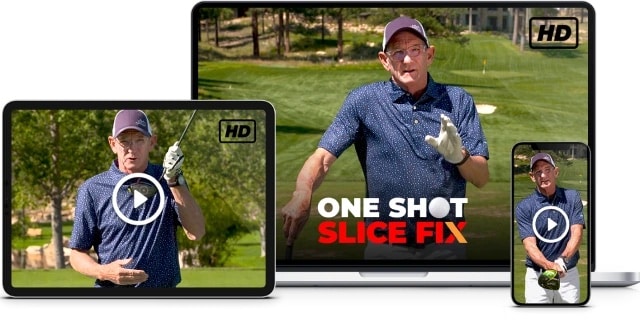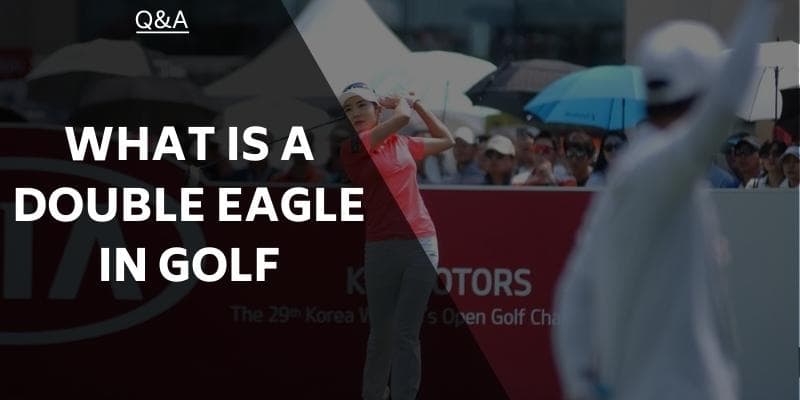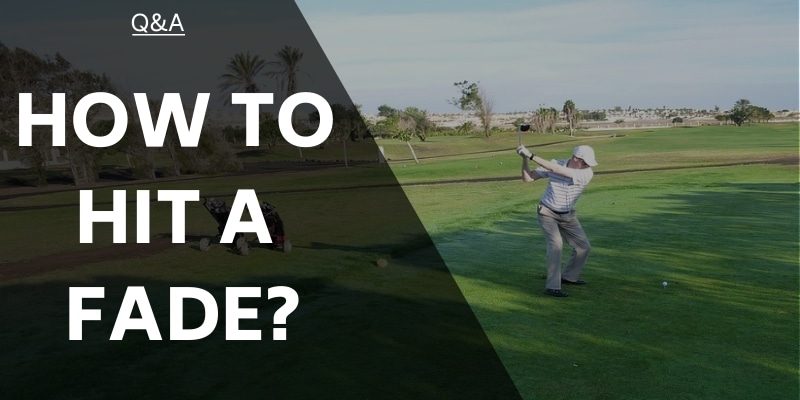Hitting a drive that starts out straight and then suddenly veers off course, making a depressing curve to your dominant side, is not how you want to start your hole.
The dreaded golf slice is one of the greatest robbers of power and distance, and everyone despises the shot.
Often it will cost you some strokes or even result in a lost ball or two, or three. But it doesn’t have to be that way.
How to stop slicing your driver? A quick fix is to ensure you have an open club face at impact. If your club face is closed, you will tend to pull your shot irrespective of whether your swing path is outside-in or steep.
With an open club face, an outside-in swing path exaggerates the fault and causes a big curve to your strongest side (right for right-handed golfers and left for left-handed golfers).
But there are other ways you can fix your golf slice for good using several remedies. Here’s an easy step-by-step guide:
- Aim straight and flatten your swing plane
- Place the ball inside your leading heel and not too far back
- Ensure the tee is at the right height and allows an upward trajectory
- Transfer your weight during the swing effectively
- Don’t rotate your forearms too late or too early. Find the right moment of release through practice
But that’s not all. There are also drills and ways to further practice to fix your slice for good. Read on for all the details to fix this problem today.
What Is a Slice in Golf?

A slice is a golf shot with a wild curve that heads away from the desired shot path. The curve is due to sidespin, and the ball curves to the side of whichever hand you use as a golfer. This is the opposite of a hook, which curves in the opposite direction.
If you get unlucky, you could end up deep into a hazard or even out of bounds.
Why Is a Slice in Bad?
If you slice your shot, your ball will veer far from the line you wanted it to follow, which means that you have a lot of distance to make up to the hole on your next shot. For example, let’s say you are right-handed, and the shot heads to the right 60 yards off course. You’d then have to re-think your strategy to get back on the fairway.
Fixing your slice is an easy way to drop strokes from your round, and you’ll learn how below.
Why Am I Slicing My Driver?
There are 5 common reasons why you’re slicing your driver. In addition to having a closed club face, there are several other causes that answer this question.
-
An Outside-In Swing Path
Another common cause of a golf slice is an outside-in swing path.
In the initial part of your downswing, your club is outside the line of the ball (or further away from you than it should be).
To compensate for this, you tend to pull the club to the inside just to make contact with the golf ball.
The combination of an outside-in swing and an open club face are the major causes of the dreaded slice due to the excessive sidespin exacted on the golf ball.
You could also upgrade your driver to help with the slice.
-
Bad Posture
A posture that is too upright will tend to put too much weight back into the heels, often accompanied by a backswing that is too upright. This will produce an outside-in swing path on the downswing.
Allowing for some bend at the hips so that the arms can relax and hang will allow you to be balanced and athletic. This will enable you to make a flatter backswing to counteract the steepness of your backswing.
-
Your Grip
The most common cause of an open club face is a weak grip that will directly reflect in the club face that is open at address. A neutral golf grip will provide more control over your golf shots. Tightening your hands in a neutral grip will not affect the direction of the club face.
You may find that your leading hand is too far underneath the club at the point of setup. This inevitably opens the club face and contributes to your slice.
A stronger grip (neutral grip) will enable you to square the club face through impact so you don’t slice the ball.
-
Arms Separating From the Body
One of the great stabilizers of a square club face is to keep your elbows tucked into your sides throughout your golf swing.
Moving your elbows away from your body reduces the control you can exert on the club to square the club face and create more power.
Chronic slicers often flare the trailing elbow outwards, away from the body, during the backswing. With the elbow away from your body, producing an inside-out swing path is difficult.
The simplest way to create the inside-out swing path is by pulling your trail elbow to your side and slightly ahead of your body during the downswing.
A good exercise to counter loose elbows is to tuck a medium-sized ball between your forearms without dropping it during your swing.
-
Not Flexible Enough
Some golfers are in the fortunate position to be flexible and can swing around their bodies.
Others are less flexible. With age, most golfer’s flexibility decreases. Flexible golfers can produce long back swings resulting in a wide arc and high swing speed.
If your flexibility is limited, getting your body to rotate on your backswing, thus creating torque, could be quite a challenge.
Turning your trailing foot outward will create more flexibility and allow you to get the club into a more powerful position in your backswing.
Read more: Golf Slice vs Hook – What’s the Difference and How To Fix It
How to Stop Slicing Your Driver
To fix the slice off the driver’s face and learn how to correct your golf slice, read more about these steps.
1. Aim Straight and Flatten Your Swing Plane
In the long term, don’t aim toward your weaker side!!! Many golfers have fallen into this trap.
The further the ball slices, the more the golfer tends to slice.
By aiming further away you tend to increase the outside-in swing, creating more sidespin and a bigger golf slice.
Aim straight!
Pushing your leading shoulder forward will change your alignment significantly. This may even enable you to create an inside-out swing path! A draw may still not be bestowed upon you, but as long as the slice is gone you will be smiling.
Many Tour professionals prefer to hit fades and still end up in the fairway. Even though a fade loses distance, the rollout of the ball can be controlled better than a draw.
Make sure when you aim left, though, that we’re talking on the left side of the fairway – not fifty yards into the rough.
If you flatten your swing plane to swing the club from inside-out, this will minimize the chance of hitting a big driver slice, not eliminate it.
2. Place the Ball Inside Your Leading Heel
Ball position plays a significant role in getting the most distance and direction off the tee. This is also the simplest cause of a slice to notice and fix.
The best place to tee the golf ball for a drive is inside your leading heel.
If the ball is positioned too far back, it can cause a slice and/or a pop-up.
When the ball is positioned too far forward, you will reach for the ball causing a loss in power and distance.
3. Ensure the Tee Is at the Right Height
Once you have found the correct position in your stance to place the ball for your driver swing, you must find the correct tee height.
The driver swing aims to hit the golf ball on an upward trajectory, creating less spin, thus promoting a straighter ball flight and more distance.
A downward angle of attack produces weak distance and slice-inducing spin.
4. Transfer Your Weight During the Swing Effectively
The lack of weight transfer during the downswing will mean you are more likely to hit the ball with a slice.
Transferring your weight during a golf swing is a relatively simple concept that contributes to many swing faults. Executed properly, it will add major distance and consistency to your shots. Failing to execute it properly will result in inconsistent contact and ball flight.
A lack of weight transfer during the driver swing will leave your weight on the trailing foot creating an outside-in swing path. This is a recipe for disaster and a major slice.
So, shift your weight onto your leading foot during the downswing.
Hanging back in your downswing will make it extremely difficult to close your club face sufficiently, which will help to stop you from slicing the ball.
With the weight on your front foot, you will be in an excellent position to drop your hands and swing inside out. Furthermore, this will enable you to close the club face to hit a straight drive or even a draw.
5. Find the Right Moment of Release Through Practice
The last step in the swing sequence is the release of the club after impact when you rotate your forearms. It’s impossible to complete your swing without the release action.
Rotating your forearms too late leaves the club face open, resulting in a golf slice. On the other hand, doing it too early will close the club’s face too early, producing inconsistent results.
This is because the swing is generally complete within fractions of a second of the timing of the rotation.
Want More Help Fixing Your Slice? Check Out One Of Our Favorite Courses
One Shot Slice Fix
Hank Haney’s One Shot Fix offers a straightforward, focused approach to tackling one of golf’s most common problems: the dreaded slice. Built around the mechanics of wrist action during your downswing, the program aims to correct your clubface angle, helping you achieve a more targeted and controlled ball flight.
The positives include its simplicity, offering immediate improvements for some golfers, and a comprehensive look at grip, body alignment, swing path, and even equipment. The one notable downside is the program’s “one-shot fix” claim, which might be a bit ambitious for some golfers. While it’s not a universal cure-all, Haney’s method provides valuable insights and techniques for those looking to quickly address their slice issues.
How To Practice To Fix Golf Slice
There are a couple of ways you can fix your golf slice when practicing at the driving range or at home. Online golf lessons can help with this too.
Swap the Golf Club for an Object
To practice your timing of the release, you could hold something in your hands and do a full swing.
When your forearms touch, you release the object in your hands.
An early release will let the object fly toward the right. A late release will throw the object toward the left.
A perfect release will throw the object toward the target.
Make Use of an Alignment Stick
This will help you understand where your divots are heading and understand your swing path better.
The divot of a slice-generating swing path will start farther away from you and end up closer to you.
A way to change the direction of your swing and the divot is by placing an alignment stick pointing away from the impact zone in the direction of an inside-out swing.
Chasing after the alignment stick during the downswing will produce the feeling that you are throwing the club away from your body. An inside-out swing will fight your slice.
Read more: Golf Drills With Alignment Sticks
Final Thoughts
The dreaded slice is known to golfers around the globe and hated by all.
You would much rather hit a baby fade if you can’t draw the ball. And many professional golfers prefer the fade. I’ve had to spend time fixing my slice in the past, and it is worth it.
There are many reasons for hitting a slice. Fortunately, there are just as many fixes to cure you of the slice. If you are one of the unfortunate golfers besotted by the dreaded slice, go ahead and work on the tips provided.
Soon you will be slice free and enjoying your golf. Now you know how to fix a slice with a driver and how to correct a slice in golf so that you can limit the times it happens to you.
You can even help your friends on the golf course with tips on how to stop slicing your driver.
Enjoy playing your golf from the fairway!!!
Related Articles
- How To Hit A Fade – Tips To Achieve A Controlled Fade
- How To Hit A Draw – Tips To Achieve The Sought-After Maneuver
- How Much Are Golf Lessons? Are They Worth The Money?
FAQs
Why Do I Slice with My Driver but Not My Irons?
Many golfers find that they only slice the ball with their driver and not their irons. This is due to the length of the club. It is tougher to square the club face of longer clubs, such as the driver than your irons. To stop slicing your irons, focus on the correct weight transfer.
Does a Stiffer Shaft Reduce Slice?
It tends to work the other way around in that if you have a softer shaft, that reduces slices as opposed to a stiffer shaft. If you have a stiffer shaft, poor slices or fades often follow. Don’t opt for a stiffer shaft if you want to know how to correct a driver slice.
Does More Loft Reduce Slice?
Yes, more loft means that the golf ball goes in a straighter direction, reducing the slice on the golf ball. You may lose a little distance, but it will go straighter. This can be helpful to know when correcting a golf slice.
Nick is the founder of GolfSpan and an avid golfer. He's not quite a pro but has over 15 years of experience playing and coaching golfers worldwide. His mission is to bring the golfing community a better experience when it comes to choosing the right golf gear and finding the right setup for your game.







